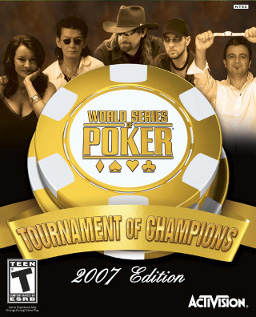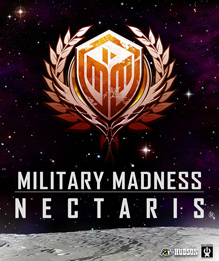Alone in the Dark is a survival horror video game series originally developed by Infogrames. In most of the games, the player controls private investigator Edward Carnby, who goes to investigate a haunted house or town that is full of undead creatures.

Test Drive Unlimited is a 2006 racing video game developed by Eden Games and published by Atari for Xbox 360 and Microsoft Windows. Atari Melbourne House developed the PlayStation 2 and PlayStation Portable versions. Being the eighteenth entry in the Test Drive series, Unlimited serves as a reboot of the franchise, discarding the continuity of the previous games. The game features over 125 licensed sports cars and motorcycles and the terrain is modeled after the Hawaiian island of Oʻahu that features over 1,000 miles (1,600 km) of roads and highways.

TNA Impact! is a professional wrestling video game based on the professional wrestling promotion, Total Nonstop Action Wrestling (TNA). The console versions of the game were developed by Midway Studios Los Angeles and published by Midway Games. Although the game sold 1.5 million units, financial issues at Midway Games prevented the planned development and release of a sequel. The game was ported to Nintendo DS and PlayStation Portable handset consoles in August 2010 under the title TNA Impact!: Cross the Line, published by SouthPeak Games, who had acquired the TNA license and assets following the collapse of Midway.

Blazing Angels: Squadrons of WWII is a flight combat video game for Microsoft Windows, Xbox, Xbox 360, PlayStation 3 and Wii. It was developed by Ubisoft Bucharest during the second fiscal quarter of 2006 for both the North American and European regions. The game features 46 different World War II fighter planes and allows the player or players to take part in several World War II events as a fictional squadron. Online support allows 16 players to take part in head-to-head and co-operative battles.

Just Cause is a 2006 third-person action-adventure game set in an open world environment. It is developed by Swedish developer Avalanche Studios and published by Eidos Interactive, and is the first game in the Just Cause series. It was released for Microsoft Windows, PlayStation 2, Xbox, and Xbox 360. The area explored during the game is described as being over 1,024 km2 (395 sq mi) in size, with 21 story missions and over 300 side missions to complete.

World Series of Poker: Tournament of Champions is a video game based on the popular gambling tournament World Series of Poker and the second licensed WSOP video game released for home video game systems, after the World Series of Poker video game. It was released for Xbox 360, PlayStation 2, Wii, PlayStation Portable and Microsoft Windows.

The Bigs is an arcade-style baseball video game for the Xbox 360, PlayStation 3, PlayStation 2, Wii and PlayStation Portable. It was released in June 2007 in North America, and in October in the PAL region. A sequel, The Bigs 2, was released on July 7, 2009.

Top Spin 3 is the third title in the Top Spin series of video games. The game was developed by PAM Development and published by 2K. New game elements include real-time weather effects, more options of professional tennis players, an in-depth character creation tool and new unparalleled gameplay mechanics. It also features impressive advancements in an audio/visual sense with improved Dolby Digital surround sound and "Evolutionary" visuals. Top Spin 4 was released as a sequel about three years later.

Section 8 is a first-person shooter developed by TimeGate Studios and published by SouthPeak Games. It utilizes the Unreal Engine 3 and was released for Microsoft Windows, PlayStation 3 and Xbox 360. It was released in September 2009 for Xbox 360 and PC, and for the PlayStation 3 on March 25 in North America and April 15, 2010, in the PAL region.

Jumper: Griffin's Story is a fighting video game based on the film of the same name. It was released for the PlayStation 2, Wii and Xbox 360 in 2008. It was developed by Redtribe for the Xbox 360, and Collision Studios for the PlayStation 2 and Wii, and was published by Brash Entertainment.

UEFA Euro 2008 is the official video game of the Euro 2008 football tournament, published by EA Sports. It was developed collaboratively by EA Canada and HB Studios and was released in Europe and North America on 18 April 2008 and 19 May 2008 respectively. The commentary was provided by Clive Tyldesley and Andy Townsend.

Tiger Woods PGA Tour 09 is a sports video game developed by EA Tiburon for the PlayStation 3, Wii and Xbox 360 versions and Exient Entertainment for the PlayStation 2 and PlayStation Portable versions and published by EA Sports for PlayStation 2, PlayStation 3, PlayStation Portable, Wii and Xbox 360.

Stormrise is a real-time tactics video game developed by Creative Assembly's Australian studio and published by Sega for Microsoft Windows, PlayStation 3, and Xbox 360. It's set in a post-apocalyptic world.

Winter Sports 2: The Next Challenge, known in Europe as Winter Sports 2009: The Next Challenge, is a multi-sport simulation released in 2008 for the Xbox 360, PlayStation 2, Wii, and Nintendo DS. It was developed by German studio 49 Games and is the sequel to Winter Sports: The Ultimate Challenge. The game features 16 winter sports events in 10 different disciplines with 16 countries represented.

Military Madness: Nectaris is a turn-based strategy game developed for WiiWare, Xbox Live Arcade and PlayStation Network by Hudson Soft. It is the latest game in the Nectaris series, and an enhanced remake of the first game.

The Bigs 2 is a baseball sports video game developed by Blue Castle Games and published by 2K for the Xbox 360, PlayStation 3, PlayStation 2, Wii, and PlayStation Portable. The game serves as the direct sequel to The Bigs. The first trailer for the game was released revealing players like Ozzie Smith, Wade Boggs, Roberto Clemente, and Reggie Jackson and a number of other Hall of Famers. Milwaukee Brewers All-Star first baseman Prince Fielder is the cover athlete chosen by 2K Sports. For the Xbox 360, PlayStation 3 and Wii editions of the game, the English play-by-play announcer is Damon Bruce while the Japanese announcer is Kasey Ryne Mazak. It was released in 2009. The game was indirectly followed-up by Nicktoons MLB.

Lucha Libre AAA: Héroes del Ring is a lucha libre video game developed by Immersion Games and published by Konami for the PlayStation 3 and Xbox 360. The video game features over 40 wrestlers from the Mexico based Lucha Libre AAA Worldwide (AAA) professional wrestling promotion. The game was released on October 12, 2010, exclusively in North America. Cancelled Nintendo DS, Wii, and PlayStation Portable versions were being developed by Sabarasa.

Rock of the Dead is a music video game. It was developed by Epicenter Studios and distributed by Conspiracy Entertainment and UFO Interactive Games. The game was released in 2010 for iOS, PlayStation 3, and Xbox 360.

Top Spin 4 is a tennis video game developed by 2K Czech and published by 2K released on the PlayStation 3, Wii, and Xbox 360 consoles. It was the last game to be released for the franchise. The game features licensed professional players, venues and equipment. The game was released on March 15, 2011 in America, and was released on March 18 in the PAL region. The PS3 version supports the PlayStation Move and is also compatible in 3D. The Xbox 360 version does not support the Kinect but is 3D compatible.

Thor: God of Thunder is an action hack and slash video game based on the Marvel Studios film Thor. The game was developed by Liquid Entertainment and co-written by Matt Fraction. Thor: God of Thunder marks Thor's first standalone appearance in a video game and features the voices of Chris Hemsworth, Tom Hiddleston and Jaimie Alexander, who reprise their roles from the film. The game was released in 2011 for Nintendo DS, PlayStation 3, Wii, Xbox 360 and Nintendo 3DS. The PlayStation 3 and Xbox 360 versions of the game can be played in 3D on 3DTVs and on 2DTVs via TriOviz Inificolor 3D glasses. The PlayStation 3 and Xbox 360 versions were met with unfavorable reviews, while the Wii, DS, and 3DS versions were met with mixed reviews.

















